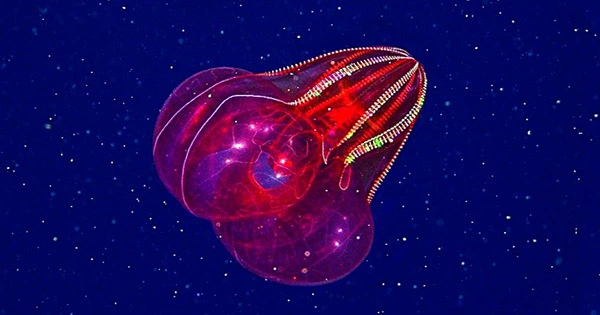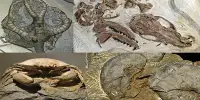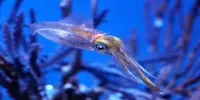The bloody-bellied comb jelly is a sight to behold, but visitors to the Monterey Bay Aquarium recently observed a side of these ctenophores when one took a captivating crap. They stated the ensuing clip might be “the world is first-ever video of a bloody-belly comb jelly pooping!” in a Twitter post. The dazzling display is part of the Monterey Bay Aquarium’s new Into the Deep exhibit, which aims to highlight some of the deep sea’s most fascinating creatures in North America’s biggest collection of deep-sea species.
Researchers from the Monterey Bay Aquarium Research Institute (MBARI) were able to learn about the bloody-bellied comb jelly (Lampocteis cruentiventer) in the wild utilizing remotely operated vehicle (ROV) film approximately 20 years ago (like that which recently captured a headless chicken monster). They were able to get the bloody-bellies into the aquarium over time by creating a captive environment that mimicked the oxygen-depleted circumstances they would encounter in their native home.
Their growth has given the rest of the world (or at least visitors to the aquarium) front-row seats to their daily routines, which include everything from eating and moving to, yeah, pooping. The ctenophore’s excrement exhibition is arguably more mystical than others, since the tank’s light appears to capture the glitter-like feces as they’re discharged in a stream. Lampocteis possesses a through-gut, which means that despite being on one of the lowest branches of the tree of life, they still have a mouth and anus.
“Also, the feces is glistening… The Monterey Bay Aquarium stated, “Move over unicorns!” and credited aquarist MacKenzie for capturing the historic film. While the bloody-belly appears bright red in the aquarium, it is nearly invisible in the ocean depths, an adaptation that allows it to evade predators. This is due to the fact that deep in the ocean, where light cannot penetrate, reds seem black and mix in perfectly with the gloomy seas.
The name of the comb is bloody-belly comb. Their guts are a deep-ruby red, so jelly is a nod to that. This trait is considered to assist hide the bioluminescent displays of the prey it eats so that their position isn’t revealed to passing predators. The Ctenophora phylum, which includes comb jellies like the bloody-belly, is a collection of marine invertebrates that may be seen bobbing around in waters all over the world. They’re distinguished by rows of hair-like cilia that beat as a means of swimming — they’re the world’s largest known creatures to do so.
These cilia are responsible for the bloody-gleam, belly’s since light diffracts and refracts off their transparent surface as they beat, giving a gleaming, and shimmering disco atmosphere. The genus Lampocteis was named for the bright rows or “combs” of cilia. Lampocteis is Greek for “beautiful comb.” Other intriguing examples include Bathocyroe fosteri (shown above) and Thetys vagina, the latter of which has a bizarre reproductive technique (really, you have to see this sh!t).















